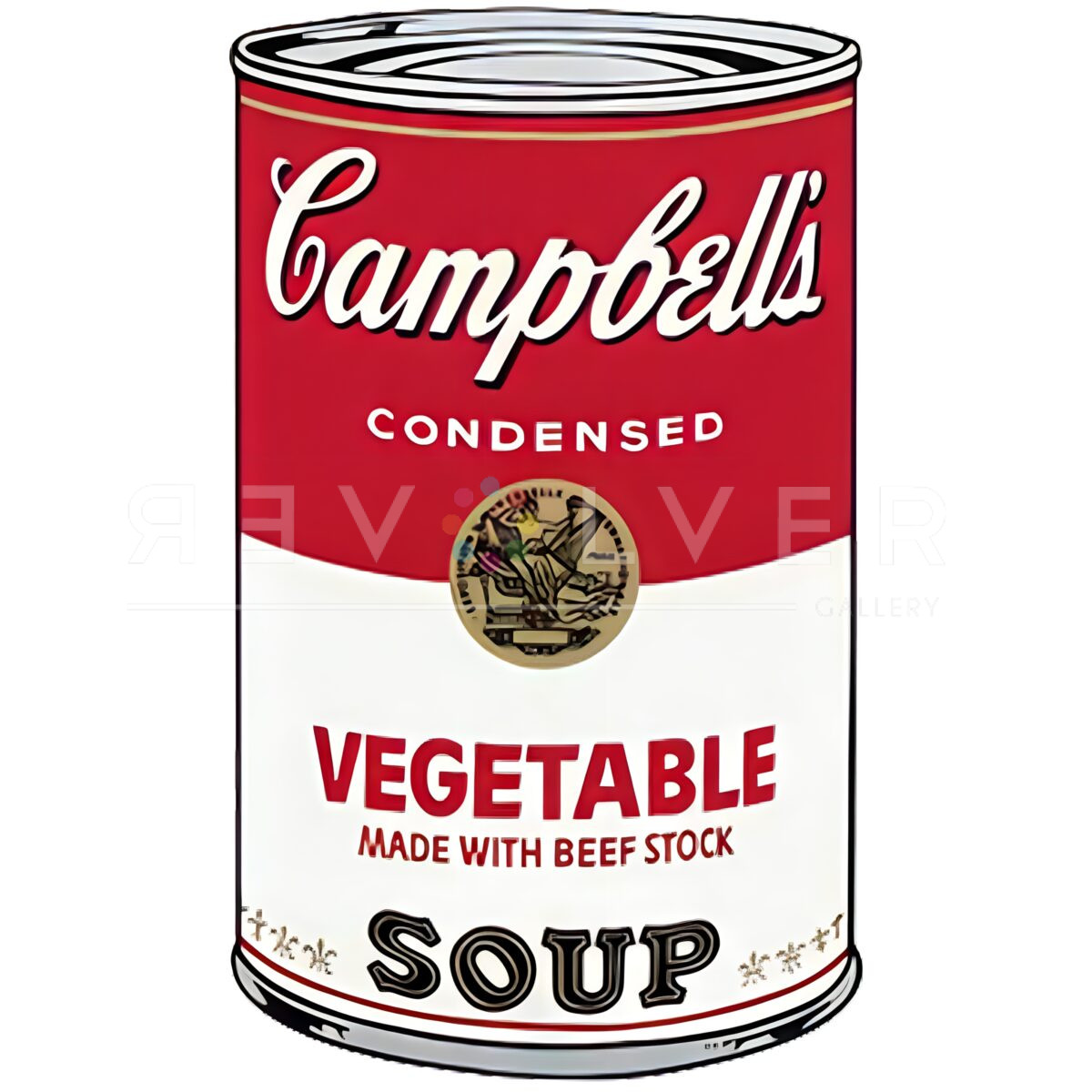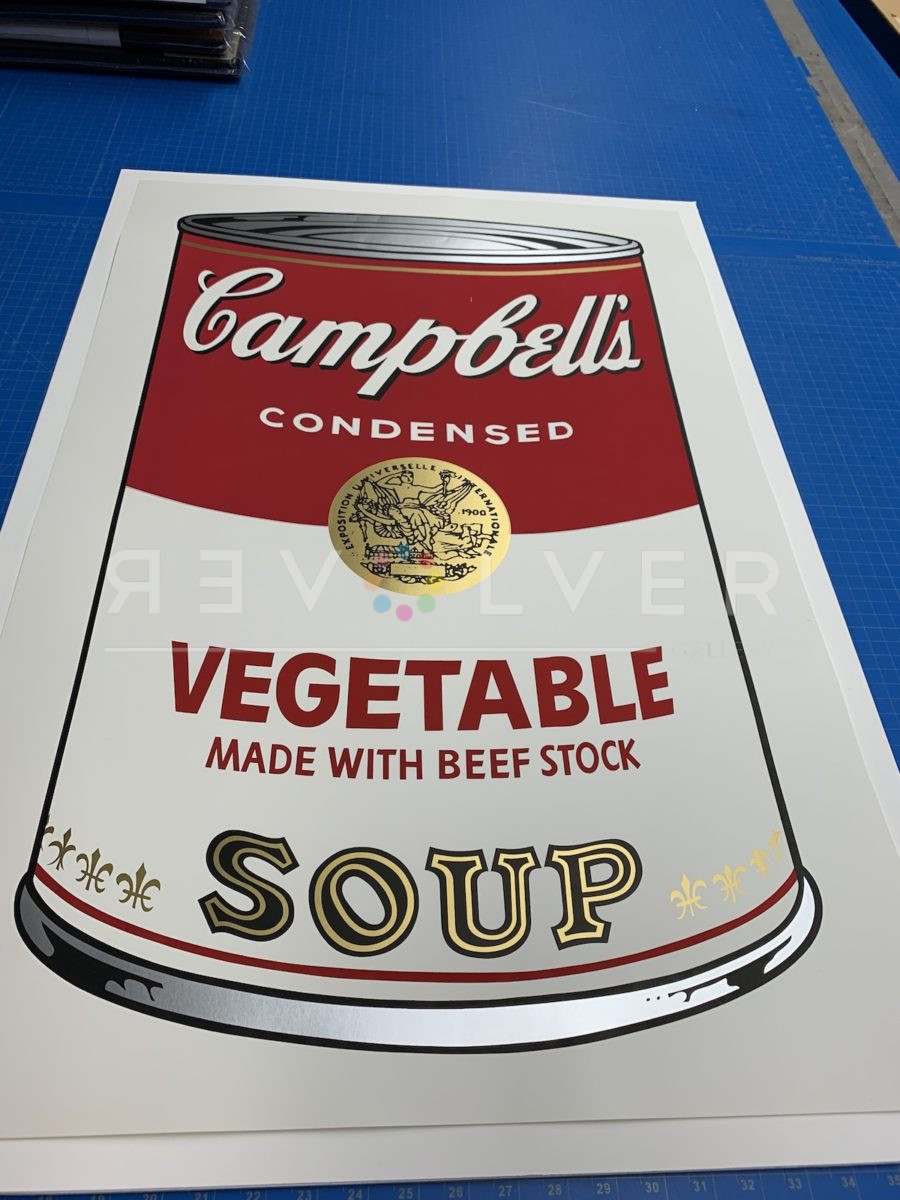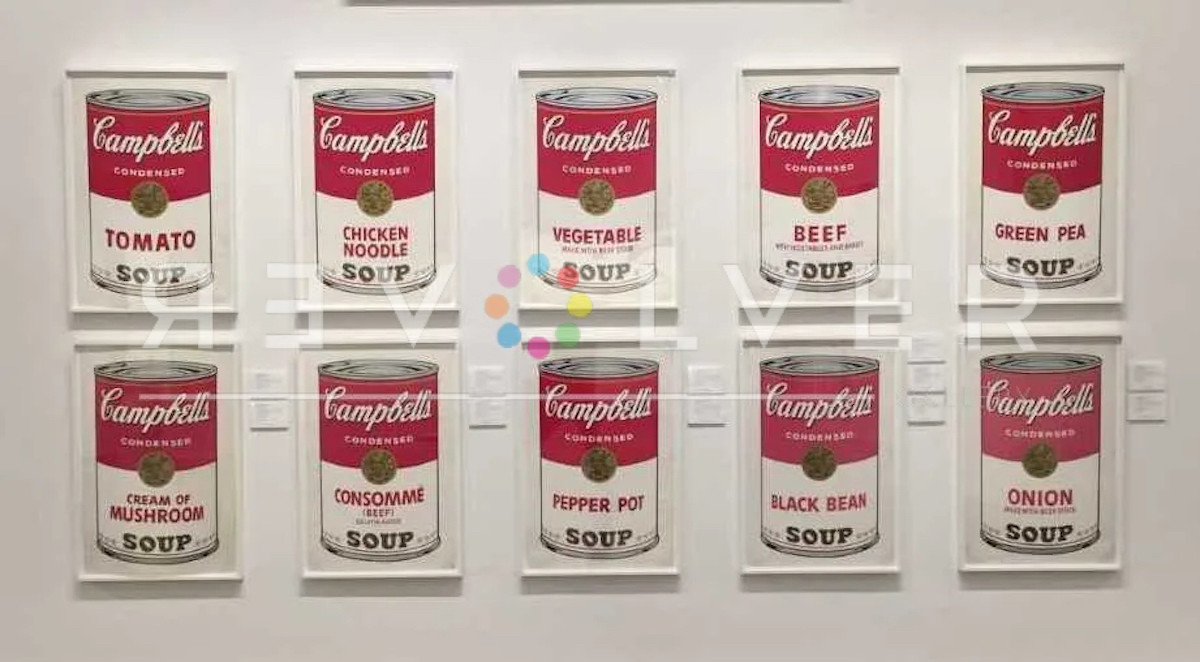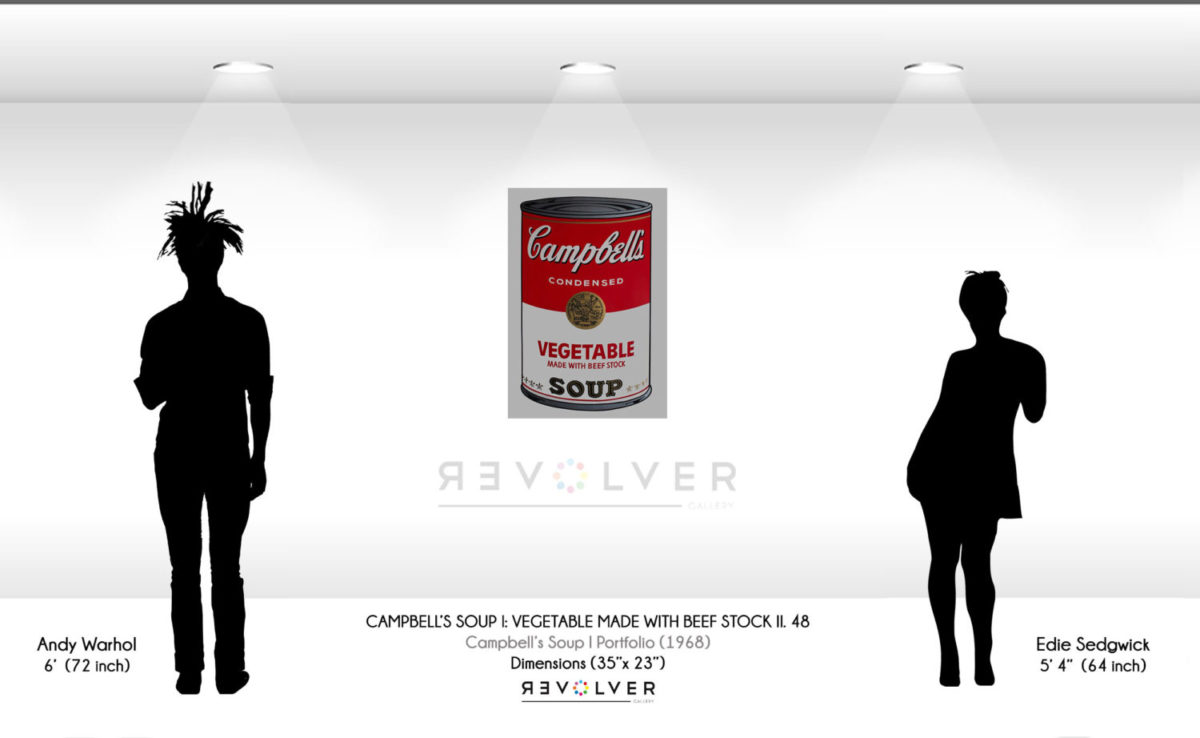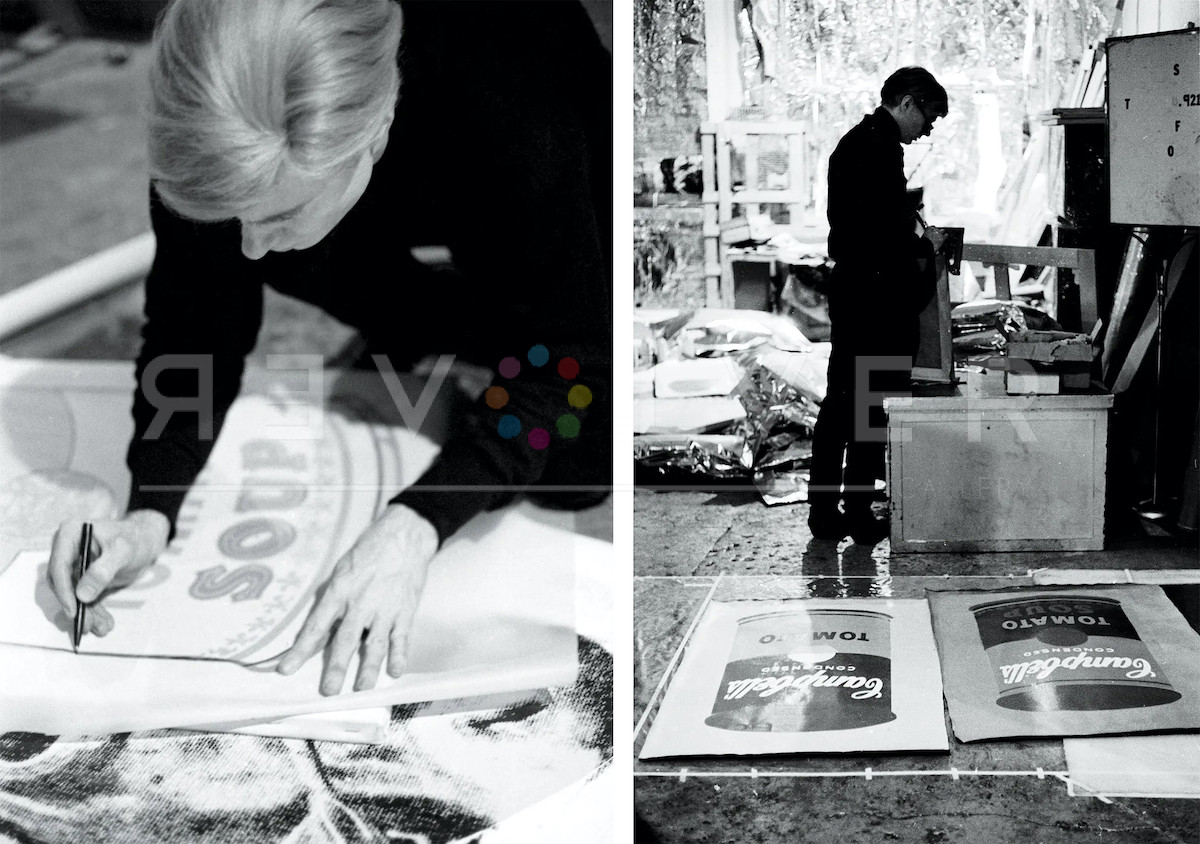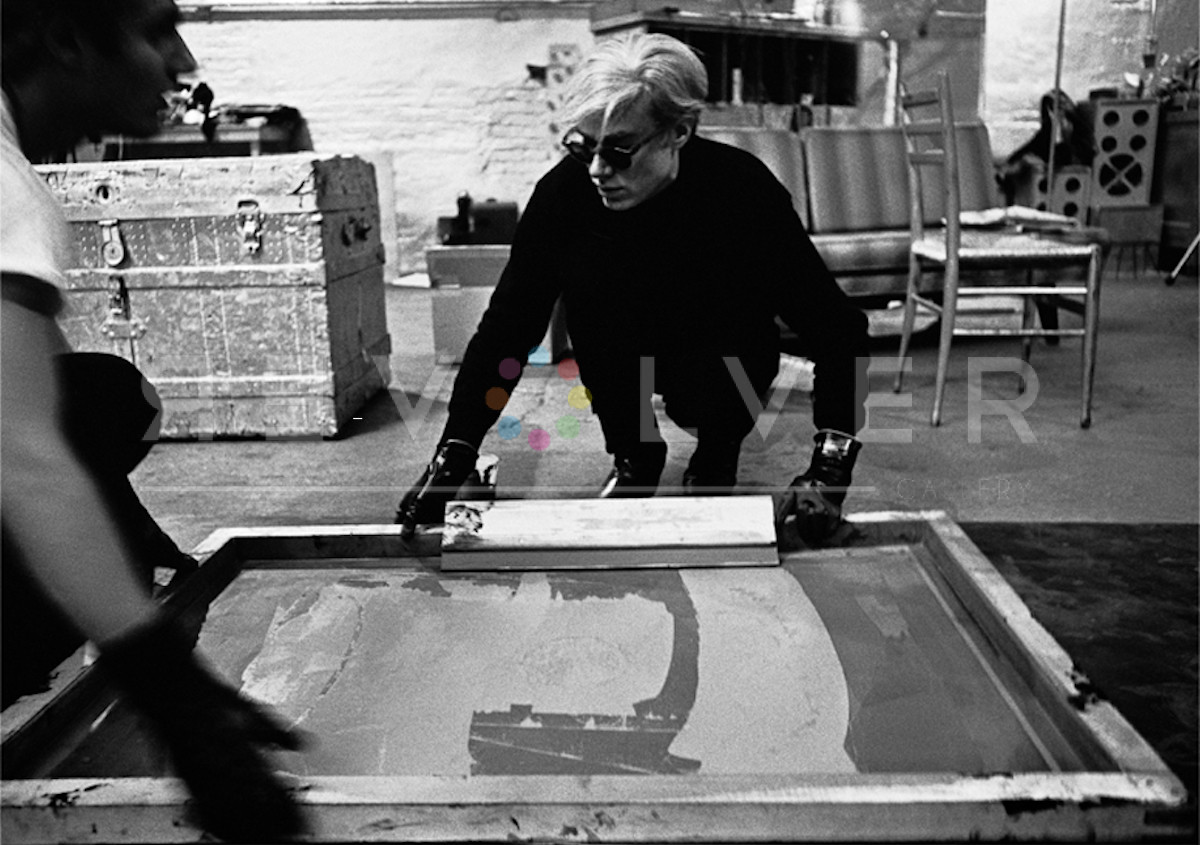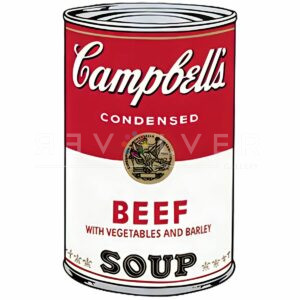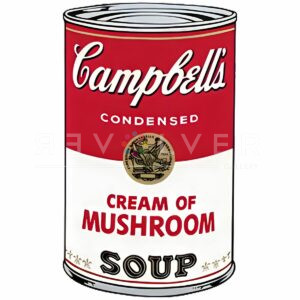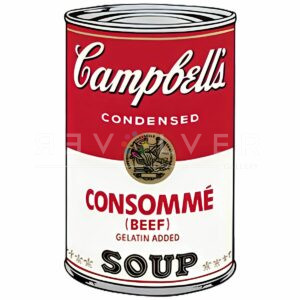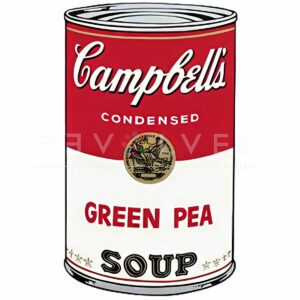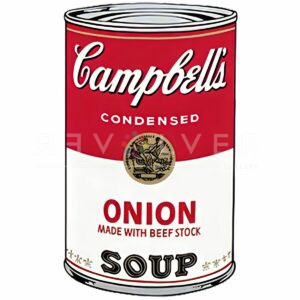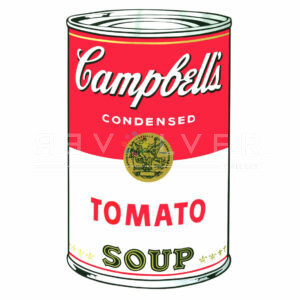Campbell’s Soup Cans I: Vegetable 48 is a print by Andy Warhol included in the Campbell’s Soup Cans I portfolio. As some of his most iconic work, the soup cans prints are indicative of his revolutionary Pop Art style. The screen print is bold in its simplicity and color. The red stripe against the white bottom accentuates the red letters below, and the white Campbell’s logo matches the bottom of the can. Campbell’s Soup Cans I, as well as his second portfolio of soup can prints, are some of Warhol’s most valuable printed works.
Warhol printed the Vegetable 48 soup can in 1968, six years after the original Campbell’s Soup Cans paintings (sometimes called 32 Campbell’s Soup Cans) debuted at Warhol’s first solo exhibit. The exhibit, held at the Ferus gallery in Los Angeles, was both acclaimed and widely criticized. Simply put, the work garnered controversy because of the way Warhol’s art disrupted the status quo of the era.
Works like Campbell’s Soup Cans I: Vegetable 48 are best understood through their historical significance. In the decades leading up to the 1960s, abstract expressionism dominated the art world. As a dignified style, abstract art reigned supreme for its complex portrayals of nature, and the intricacies of the human condition. Consequently, going to a fine art exhibit and seeing a vegetable soup can on the wall was mystifying for many. Indeed, the work offended a number of artists and critics.
This is a large reason why Andy Warhol’s soup cans have been so successful. They depict a commercial image, void of the author’s touch, and are completely objective, lacking the typical painterly style. Warhol’s brave presentation was a risk, and it challenged the established culture of fine art. Of course, the pieces didn’t necessarily harbor success from the technical skill or creativity involved in making them, but from their provocative nature, and Warhol’s philosophy behind the images.
Warhol liked painting mundane objects because he saw them for their perfection and convenience. He also wanted to ask what could “count” as art, and experiment with the context in which we witness it. Does an ordinary picture of a soup can count as art if we see it in Campbell’s headquarters, or on a billboard? Does that same image become art if we witness it in a museum? With questions like these in mind, Warhol pushed the boundaries of what we might accept as art. He attempted to re-focus our attention from subjects of natural beauty to art that reflects what is authentic to the world that humans have constructed.
Consequently, the Campbell’s Soup Cans I: Vegetable 48 print (and much of his other work) focuses on the industrial and commercial culture of our society, drawing our attention to unexpected sources of beauty and inspiration. This theme can be seen in works like the Ads series, Shoes, and even his Truck portfolio.
Additionally, Warhol felt many artists at the time overlooked the simple pleasures of modernity. In particular, mass production, consumer culture, and ubiquitous images of American society fascinated Warhol. Celebrities, popular commodities, and fictional characters were all the same type of famous to him. As a result, Warhol’s legacy largely includes a catalogue of pop culture, showcasing symbols of fame, glamour, and ordinary life. Above all, the Campbell’s Soup Cans I: Vegetable 48 print is a cornerstone of Warhol’s work, representing his most bold display of his thought and his signature Pop style.
Photo Credits:
- Andy Warhol tracing Campbell’s Soup silkscreen, The Factory, New York City, circa 1965 © Estate of Nat Finkelstein © 2021 The Andy Warhol Foundation for the Visual Arts, Inc. / Licensed by DACS, London
- Andy Warhol and Gerard Malanga make a painting, 1964. Vintage gelatin silver print, 10¼ × 14¾ inches; 26 × 38 cm. Photo by Matthew Marks.
- Andy Warhol, 1964. Vintage gelatin silver print, 10¼ × 14¾ inches; 26 × 38 cm. Photo by Matthew Marks.

